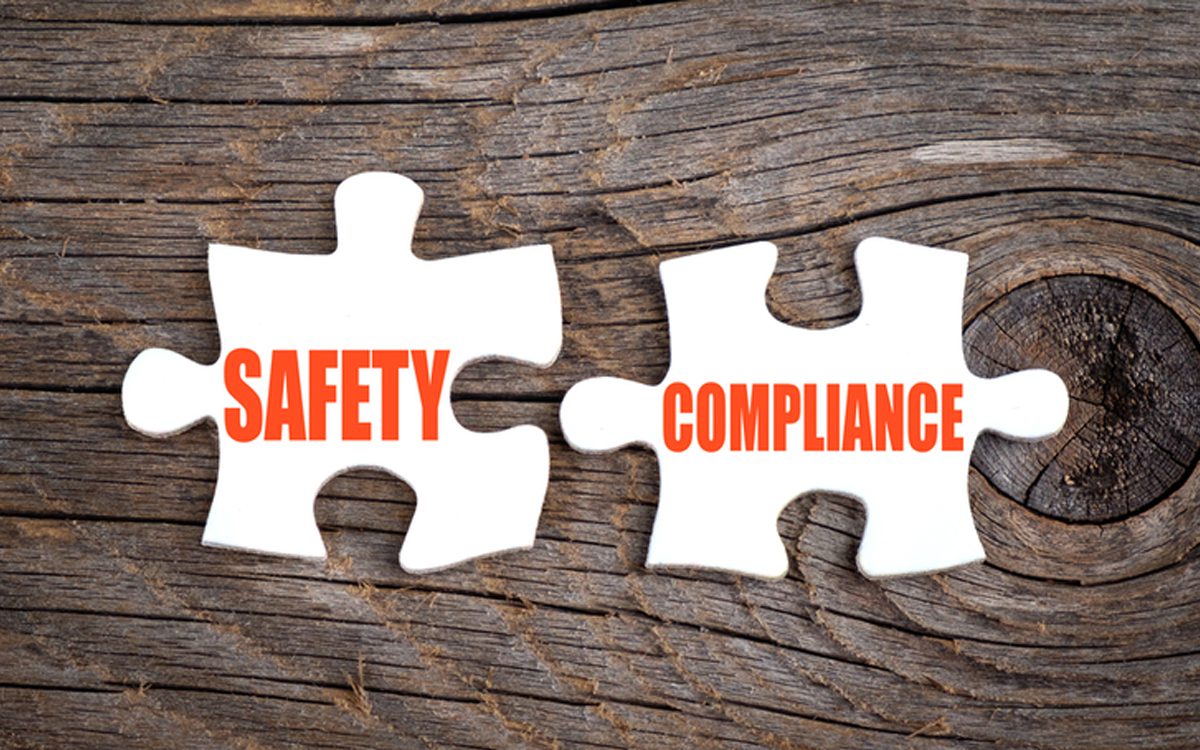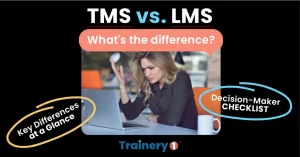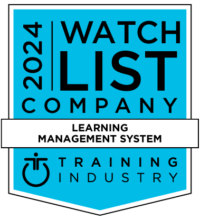COVID-19 has had a significant impact on the workplace, including safety and compliance training protocols and systems. As with many business procedures currently in effect, employers are re-inventing training in an environment where past practices are not possible or no longer work.
Workers have the right to working conditions that are safe, to training on any hazards that are present in their workplace, to being able to review records of workplace illnesses and injuries, to file a complaint with the Occupational Safety and Health Administration (OSHA), and to be able to exercise these rights without the threat of retaliation.
Even before the onset of the COVID-19 pandemic, OSHA has provided guidance for workplace safety and health training and for protecting workers. Now, employers are expected to review their training protocols, and to update their training activities, thinking outside the box to find training techniques that comply with the requirements of OSHA training standards.
Most OSHA safety training requires that the training be delivered by competent persons, that the training be structured so that employees attend group training activities, use a variety of eLearning modalities, and demonstrate their learnings from the training on the job.
Designing effective safety and compliance training requires much more than a “check the box” mindset. With so many workplace changes due to the pandemic, how can educators create training programs that are effective, and at the same time, respect the rules for preventing the spread of the disease? Now well into the pandemic, what have trainers and learning and development (L&D) professionals learned?
Impact of Facilitator and/or Learner Availability
The Challenge
New infection control practices may mean limited availability of those who facilitate the training, or of the employees who need the training. The unpredictability of today’s work environment may tempt management to postpone safety and/or HR training.
The Solution
OSHA generally frowns on postponing safety and compliance training, for obvious reasons. However, OSHA has offered some relief from fines for postponing training as long as:
- the employer has a plan demonstrating good faith that training will be scheduled as soon as reasonably possible;
- the plan documents the steps the employer has taken to review the current safety training strategy, and identify why training isn’t practical during the pandemic;
- the plan documents steps taken to provide interim protection to employees until the required training can be delivered.
That said, OSHA doesn’t automatically dismiss employers from responsibility for meeting existing training requirements. Compliance officers are expected to explore all options to comply with applicable standards, including the use of virtual training, eLearning and blended learning. If safety training has been delayed, employers are expected to implement alternative protections, such as engineering, administrative controls, or protective equipment. Training must be rescheduled as soon as possible, and, employers must demonstrate “good faith efforts” to meet applicable requirements as soon as possible. Should there be an inspection during the interim period OSHA will take into consideration the organization’s attempts to comply in good faith when determining if a citation is appropriate.
Choosing the Training Format
The Challenge
Safety training—as well as human resource training in general—has been impacted by the need to wear masks, social distance and protect each other from COVID-19 exposure. Safety training has some unique challenges. A balance must be struck between what has to be done in person and what can be done electronically. Creative thinking, agility and flexibility have been, and continue to be, required of managers and learners in order to maximize learning of the safety material and minimize the risk of infection for all who are involved.
The Solution
The effectiveness of training has always been critical, but the pandemic has re-staked an attitude of immediacy and effectiveness. Employers are reviewing and reframing L&D, occupational and safety training by determining which topics and employees need in-person, eLearning, or combination (blended learning) formats. As a result, the employer is better focused on meeting specific topical or individual learning needs.
Another often overlooked format for increasing the effectiveness of safety training is that of the coach/mentor. Here, supervisors are encouraged to model proper safety practices on an ongoing basis to ensure that safety training principles are understood and being followed. If a person is trained in a particular safety procedure, but then sees his or her supervisor not following that procedures, then that employee is less likely to follow the procedure. In essence, this coach/mentor format is the basis of all safety training and creates a “culture of safety.”
Training Program Design
The Challenge
How do we design the elements of the safety training program to accommodate the availability of trainers and learners and to utilize the training formats that are possible for a particular safety training topic?
The Solution
Employers who incorporate industry best practices into revised training programs are more likely to recoup the investment in their employees. These best practices include:
1. An Engaging Multimedia Presentation of Material
Safety training, like all workforce training, should be presented by an expert trainer and/or L&D professional. The topical presentation can be ‘live’ (in-person), a blend of live and virtual, or it can be recorded and virtual.
People learn best by hearing, seeing, and doing. Delivery should include verbal information, visuals like video, animations or PowerPoint presentations, and tactical demonstrations to help build recall.
Short videos can be particularly useful in demonstrating task performance, behavior or situational reactions. There are a number of companies who provide access to short safety and compliance videos that can be embedded into a presentation. These videos are a cost-effective way to demonstrate the information visually, thus giving learners who are more visually-oriented a better chance at grasping the information.
2. Retention Testing
Written Questions: Several safety training video providers have quizzes at the end of the presentation to make sure that the learner has understood the material. Whether testing throughout the presentation of the material or at the end, the act of testing the learner’s recall is helpful not only to the learner, but it helps the trainer better prepare and deliver effective training.
Performance Testing: Not understanding safety precautions can result in illness or death. Whether wearing a mask during the pandemic, running equipment on a plant floor, or understanding what to do in an active shooter situation, it is critical the learner recall and accurately perform the correct procedures. This is an important piece of any safety program: the trainer must be absolutely sure that the learner has understood all aspects of the training, practice it, and be visually evaluated.
Zoom or other similar platforms can be used for evaluation of some safety training, but there are still some instances where face-to-face testing is essential. One example of this is fit-testing a respirator to ensure a tight seal around the face for employees exposed to toxic materials or atmospheres. Another example is safety training for truck drivers where a trainer must periodically observe a driver “in person” to certify or recertify the driver’s credentials.
3. Reinforcement & Skills Reviews
Periodic reviews are a critical part of training, especially for non-routine tasks that are not performed often, tasks performed in emergencies, or in which social complacency is an issue. OSHA provides guidelines on how often training on certain topics must be repeated, however, microlearning, such as short on-demand video training pieces, are ideal for periodic skills review and they can be viewed on any device that can stream video.
In 1634, John Milton coined the phrase “every cloud has a silver lining”. The most common hurdle to successful online training across a diverse workforce and during the pandemic has been access to standardized technology and equipment for remote learning. This has caused companies to re-evaluate learning platforms and learning processes through a more equitable mindset. Likewise, employers are now tackling an entirely new protocol for workforce learning, whether it is health screening, class size, physical and cultural barriers, regulatory requirements, or the impact of learners’ perceptions. Learnings from this experience provide the opportunity to reframe training structures and tools for future L&D programs.
After the COVID-19 pandemic is over, there may be a new normal to life, including how we work and train employees. The Covid-19 environment requires employers to be creative and think outside the box when planning effective safety, health and workforce training during the pandemic. Done correctly, the changes in delivery, use of technology and training methodology emerging from the pandemic will be helpful in a post-pandemic world.
This article from Training Network, a division of JER HR Group, was originally published by eLearning Industry in September 2020. You may listen to the audio version on their site.
Brenda H. Thompson, MAis the Associate Director, Operations for JER HR Group, a full service HR consulting firm providing customized services in Training, Consulting, Compensation and Executive Recruiting; for Training Network, a global distributor of Safety, Management, Technology and Human Resource training content and learning platforms; and the brand Trainery, a custom-built, user-centric LMS. From 1994-2007 Brenda was President/Founder of an organization dedicated to supporting organizational development professionals. She is the Immediate Past Chair of the Board of Directors for the Better Business Bureau Serving Central and Northwest North Carolina. Latest posts by Brenda H. Thompson, MA (see all)
- 3 Challenges for Safety and Compliance Training During the Pandemic – October 20, 2020







